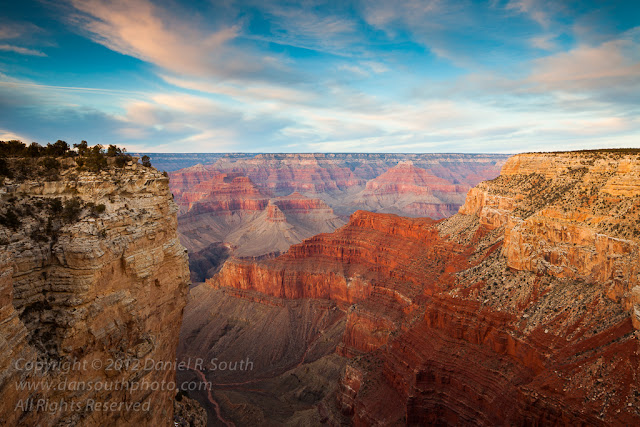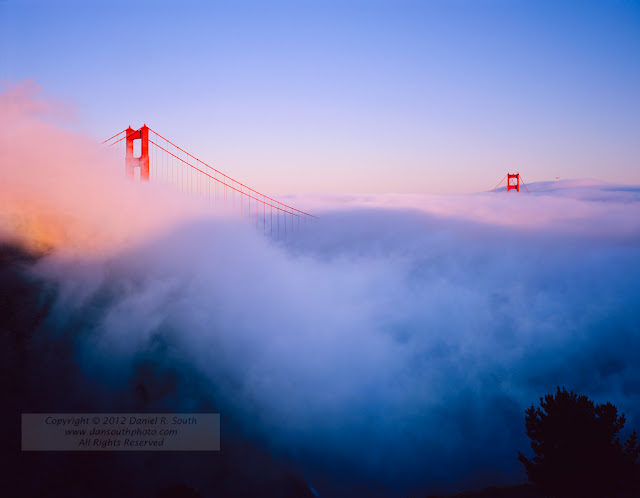Arizona. Land of sun, sand, and cactus. An oasis where one might expect to play a round of golf any day of the year.
Granted, part of the state matches this description, but Arizona is a complex landscape. Vast areas of Northern Arizona rest on high plateaus, considerably higher in altitude than the "Mile High" city of Denver, Colorado.
When winter comes to the high plateau, it's cold. Surprisingly cold. Nighttime temperatures can approach zero degrees Fahrenheit (-17 C). Dress warmly if you want to greet that once-in-a-lifetime sunrise.
 |
| Pre-Dawn Glow Over The Palisades Of The Desert |
Winter can be an interesting time to visit Grand Canyon. The crowds are smaller. The life-threatening heat of summer is no longer an issue. And if the weather cooperates, you'll be able to enjoy views of the canyon graced with fresh fallen snow.
 |
| Sunrise Over Grand Canyon in Winter |
Ice and snow add subtle highlights to canyon features. Since the winter sun hits the canyon at a low angle, interesting shadow patterns are visible throughout the day.
 |
| Snowfall atop Grand Canyon Features |
At sunset, very little of the canyon will be lit by direct sunlight, but unexpected lighting effects can occur. In this image, warm light from the setting sun was reflected downward into the canyon. The effect lasted for only a few minutes. Luckily, I was able to frame this shot before it faded.
 |
| Sunset Reflected Downward From Winter Clouds |
Witnessing a Grand Canyon sunset over snow-crested cliffs is a breathtaking experience.
 |
| Winter Sunset, Grand Canyon National Park |
If you want to see a different dimension of Grand Canyon, consider a trip during the winter months. Drive carefully, dress warmly, and enjoy the unexpected as it unfolds before you.
 |
| Lenticular Cloud over Grand Canyon at Sunrise |
I would like to extend a special 'Thank You' to all of the wonderful people who keep Grand Canyon open for tourism every day of the year.
Camera:
Canon EOS 5D Mark II
Lenses:
Canon TS-E24 f/3.5L II
Canon 24-105 f/4L IS
Canon 70-200 f/4L IS
Wishing you great light and meaningful moments!
Copyright 2013 Daniel R. South
All Rights Reserved










